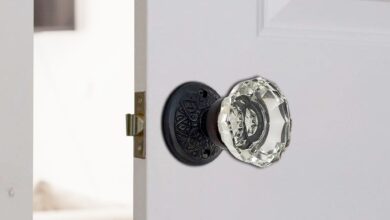The drain tank does not hold water. What to do?

Focus on the four main elements of the drain system: valve, overflow, drain lever, and faucet. Float valve (or valve) – part connected by a union with a supply hose. A locking knot is mounted on it, controlled by a float. If the tank is empty, the float pulls down the locking part of the float valve and the nozzle opens. The float floats when the tank is full and closes the nozzle.
The release valve is a special cover fixed on the hinge. It closes the drain hole. When the lid is closed, the float valve opens and the tank begins to fill. When it is open, the water flushes into the toilet. The overflow is a hollow column directly attached to the toilet hole. The main function of this element is to protect the cistern from overflows.
Drain handle – a system that controls the water drain valve. Its main element is the holder with a rocker attached to the valve (valve) at one end. The user presses the button pressing the loose end of the rocker and opens the lid. When the button is released, the swinging arm and cover return to place.
The drain tank with the bottom water source has a slightly different structure, but the elements that require replacement or repair are the same as in the drain tank with the side water source
PREPARATORY WORK
You may need pliers, work gloves (preferably rubber), pliers and spare parts for repair work on the drain tank because it cause slow draining toilet and other generate other issues. Before repair work, turn off the tap at the tank inlet. Most modern toilet bowls have a recessed button on their lids. Naturally, you need to disconnect the button and the decorative ring before removing the cover. After disconnecting the button mechanism, the ring comes off (easily tied with any sharp object). The fasteners fixed to the tank are removed.
In a two-button washing system, the buttons are sequentially pressed and slid until disconnected.
DRAIN TANK FLOWS: POSSIBLE CAUSES
Quite often it happens that the water in the tank does not hold and constantly flows into the toilet. This happens most often due to poor quality siphon or other fittings, depressurization of plastic parts of the siphon, or loss of pear elasticity. The main reasons may be several. Here are some of them:
• tight fit of the petal or pear;
• the ball crane tank operation is not adjusted;
• the connection of the ball spout and the hose is not tight;
• The toilet and tank connection is not tight.
So, the drain tank does not hold water, what to do?
PEAR LOST ITS ELASTICITY
What to do if the drain tank does not hold water? Be sure to check the pear’s elasticity. The manufacturer warns that their work is short-lived, as the tire cannot maintain its elasticity for a long time. After a while, it hardens and cannot connect tightly with the saddle as the water starts to leak. The solution to the problem is to replace it with a new one.
THE CAUSE OF THE USELESS BOLTS LIMITING THE SADDLE
Therefore, in case the drain tank does not hold water, the repair is done as follows. First, the water was removed completely. Then, between the flexible hose and the valve of the float, the fixed nut screw is unscrewed, and the bolts securing the toilet bowl to the cistern are then removed. Then bend the tank slightly, freeing the gutters that connect it to the toilet. Now the bolts are removed: mandatory, even if both become unusable. They are newly installed in their places (brass or stainless). It should be tightened carefully, without special effort and avoiding slips and distortions. You can now combine design and use.
The drain tank does not hold water: what to do to fix the problem
The design of toilet cisterns is not a very complicated device. To fix it, you can of course contact the experts. But better and cheaper, if you have the skills to work with the tool, do the repair yourself. It will not be difficult.
Working principle and device of the washing tank
The drainage mechanism of the toilet cistern is divided into water drainage type. There are models in which all the water goes into the toilet and flushes the sewer system when the lever is raised or the button is pressed. Considerate savings on more modern models. So, there are two buttons – when one is pressed, the tank is completely emptied, and when the other is pressed, some of the water goes down.
Despite this, the interior of any type of cistern is almost the same. The wash tank siphon consists of several levers, a pear, a float, valves, a button and a gasket. Drainage works in the toilet with the hydraulic door principle. The water filling the tank pushes the float and gives a “signal” to the shut-off valve to prevent water flow. When the user presses the button, the drain valve opens and the water drops. So it is discharging.



